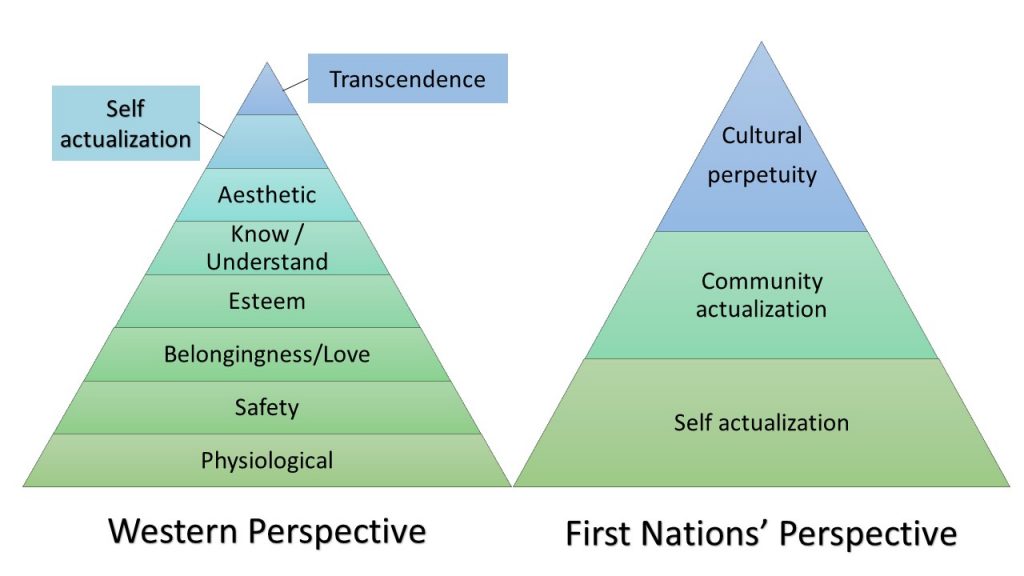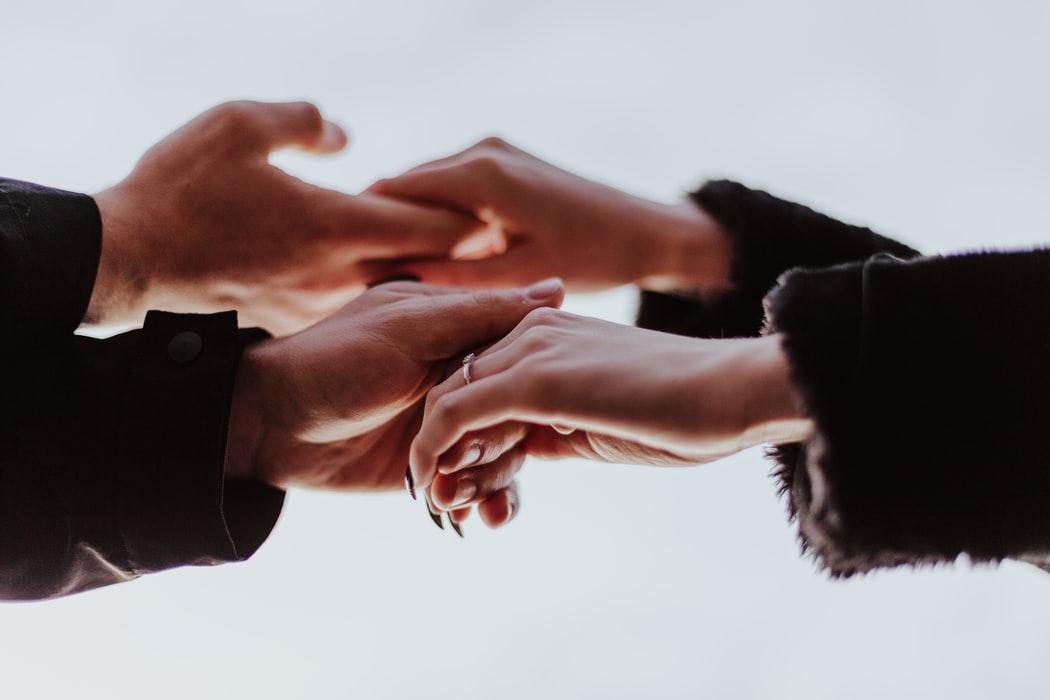Connection
Elizabeth B. Pearce; Wesley Sharp; and Nyssa Cronin
The need for, and benefits of, being connected in an emotional and social way to other human beings is one of the central foundations of family life. The quote speaks to the tension amongst Western, Eastern, and Indigenous views about individuality and collectivism. He refers to the “optical delusion” (what we might call a social construction) of seeing ourselves as separate beings from others and the natural world. Increasing layers of research, however, speak to the importance of close social relationships (belongingness and connectedness) as well as the wider circle of social networks.[1]
Theorists who discuss families, parenting, and mate selection rely on an underlying principle: that it is the mutual social and emotional interdependence of human beings that fosters family development and growth. In addition, our ability to connect to the greater society and planet, including those who are less similar or related to us, enhances our care for family and community. An emphasis of this text is the disposition of being willing to listen and to learn about the greater community in which we live.
As we discuss social connection, we are referring to qualities and experiences such as:
- Positive relationships with others in the social world;
- Attachment, an affectionate emotional connection with at least one other;
- A feeling of belonging and lack of feeling of exclusion;
- Social support, which includes connection but may also include informational support, appraisal support (such as personal feedback and/or affirmation), and/or practical support (such as money or labor);
- The act of nurturing and being nurtured;
- An individual’s perception of all of the above.
It matters most to the individual what they perceive as connection and support, and less how others would view it.
For example, in Urie Bronfenbrenner’s Ecological Systems Theory, he shows the individual within concentric circles that emphasize all the people and places in that person’s life. The outer circles include the community values and norms, as well as the person’s location in time and geography. Although Bronfenbrenner identified systems (for more on Bronfenbrenner’s theory, see the Studying Families chapter), it can be argued that all systems consist of people. It is the people within these circles that will interact with and impact each of us.
Abraham Maslow’s Hierarchy of Needs Theory, also discussed in the Studying Families chapter, includes the emotional need for affection and loving connections to others once basic physiological and biological needs are met. In contrast, there are theories created by multiple indigenous groups, and best documented by the Blackfoot Nation in North America, that emphasize the self-actualization of not just the individual, but of the community as the most primary of needs.

In 1938 Maslow spent time with the Blackfoot Nation (link to archival photo) in Canada prior to releasing his Hierarchy of Needs theory. It is believed that he based the teepee-like structure on the Blackfoot ideas but westernized the focus to be on the individual rather than on the community.[2]
If we look more closely at the representation of Blackfoot ideas, it can be seen that the well-being of the individual, the family, and the community are based on connectedness, the closeness that we experience with family and friends, and the prosocial extension that we provide to others in our communities and in the world. In addition, this model focuses on time; the top of the teepee is cultural perpetuity and it symbolizes a community’s culture lasting forever.
Maslow’s theory is of value, but the mislabeling of it as a theory of human development rather than as a “Western Cultural Theory of Human Development” mistakenly applies what Maslow observed to all human beings. Bringing theories from other cultures and geographical regions forward helps us to understand the variety of ways that human beings develop and to recognize the value of the diversity of family experience and beliefs.
Human connectedness and prosocial relationships are increasingly associated with better health outcomes and longevity. The World Health Organization now lists “Social Support Networks” as a determinant of health. Their webpage notes that a person’s social environment, including culture and community beliefs, is a key determinant in overall health.[3] Household sizes are decreasing, and families are more often living apart. Employment and education options mean that some families make the choice to live distantly from their families of origin. But other families live apart, not by choice, but because of immigration laws that restrict family cohesion, or economic needs that force a choice between survival and family togetherness. This country has a history of immigration law that has often separated families, including spouses. For more on this topic, look back at the Social Construction of Families chapter. This practice contributes to the number of transnational families, many of whom are involuntarily so. In 2018, the United States developed a “zero tolerance” policy toward illegal immigration from the South and imprisoned families seeking legal status, separating children from parents. Although the policy was officially ended in June 2018, it has continued to at least October 2019, with about 1,100 additional children being separated from their parents since that time. If you would like to read more about this particular policy, there is a deep dive on this Human Rights Watch webpage, and there are links to detailed fact sheets and descriptions of visits to the facilities where parents, babies, toddlers, and children are being held.[4]
Public health officials are working to move forward the prioritization of social connections as a part of public health efforts in the United States. They propose examining current evidence and research, conducting additional research, and creating a consensus process amongst experts related to social connectedness.[5]
Families in the United States have the opportunity to know and be connected to people of many ethnicities, histories, experiences, and cultures. It is important to acknowledge one of the underlying motivations for connecting to others that we see as different from ourselves: a feeling of similarity and positivity.[6] Similarity initially connects us and draws us together, and it is possible to see similarity in people that we might first identify as a member of “the other” group. It seems that once we feel connected to others that a more familial sense of belongingness can develop, which then benefits individuals and the greater community. This research supports the belief systems of indigenous peoples, such as the Blackfoot Nation discussed earlier, and Eastern philosophies which see a reciprocal relationship between the good of the community, the planet, and the good of individuals.
In this chapter, we will explore kinship connections, including chosen families and partner or mate selection. In addition, we will look more closely at the factors that affect our partner choices and family formations, including psychological, societal, and institutional factors.
Kinship
Kinship refers to the broader social structure that ties people together (whether by blood, marriage, legal processes, or other agreements) and includes family relationships. Kinship acknowledges that individuals have a role in defining who is a member of their own family and how familial relationships extend across society.
At times we may use the terms “kinships” or “kinship groups” interchangeably with “families” to remind ourselves of this broader definition.

Chosen Families
According to The SAGE Encyclopedia of Marriage, Family, and Couples Counseling, “chosen families are nonbiological kinship bonds, whether legally recognized or not, deliberately chosen for the purpose of mutual support and love.”[7] Chosen Family is an option for every individual, although it has historically been associated with the LGBTQ+ culture. People who identify as lesbian, gay, or other stigmatized identities have sometimes been disowned by families who do not accept these identities and therefore do not accept their children (or other family members). You may wonder if they are the only ones who have chosen families. The short answer is no, chosen families can be for anyone of any background who desires to connect through kinship bonds with others who are not blood- or legally-related individuals. The chosen family can meet or supplement needs not sufficiently met by the biological or otherwise traditionally structured family. In some cases, people are ostracized from their family of origin and are denied a sense of belonging. Others may be living away from their biological families due to schooling, immigration, employment, legal restrictions, migration or other reasons. While anyone can have a chosen family, it is important to understand why we have them and how they are formed–and how they can be seen through the lenses of love, nurturance, and equity.
Licenses and Attributions
Open Content, Shared Previously
Figure 5.2. Photo by Priscilla Du Preez. License: Unsplash license.
Open Content, Original
Figure 5.1. “Maslow’s hierarchy of needs compared to the First Nations’ perspective.” License: CC BY 4.0. Based on research from Rethinking Learning by Barbara Bray.
- Seppala, E., Rossomando, T., & Doty, J.R. (2013). Social Connection and Compassion: Important Predictors of Health and Well-Being. Social Research: An International Quarterly 80(2), 411-430. http://dx.doi.org/10.1353/sor.2013.0027 ↵
- Bray, B. (2019, March 10). Maslow's Hierarchy of Needs and Blackfoot Nation beliefs. Retrieved December 28, 2019, from https://barbarabray.net/2019/03/10/maslows-hierarchy-of-needs-and-blackfoot-nation-beliefs/ ↵
- World Health Organization. (2020). The social determinants of health. Retrieved March 6, 2020, from https://www.who.int/health-topics/social-determinants-of-health#tab=tab_1 ↵
- Trump administration family separation policy. (2020). Wikipedia. Retrieved April 24, 2020, from https://en.wikipedia.org/wiki/Trump_administration_family_separation_policy ↵
- Holt-Lunstad, J., Robles, T. F., & Sbarra, D. A. (2017). Advancing social connection as a public health priority in the United States. American Psychologist, 72(6), 517–530. https://doi.org/10.1037/amp0000103 ↵
- Cialdini, R. B., Brown, S. L., Lewis, B. P., Luce, C., & Neuberg, S. L. (1997). Reinterpreting the empathy-altruism relationship: When one into one equals oneness. Journal of Personality and Social Psychology, 73(3), 481–494 ↵
- Carlson, J., & Dermer, S. B. (Eds.). (2019). The SAGE encyclopedia of marriage, family, and couples counseling. SAGE Reference. ↵
A society viewpoint that focuses on meeting the needs and goals of all members of a group, rather than focusing on individual successes.
Meaning assigned to an object or event by mutual agreement (explicit or implicit) of the members of a society; can change over time and/or location.
A socially transmitted worldview created, learned and shared by a group which includes values, beliefs, customs and behaviors and which is reflected in language, objects, food, and social institutions.
Families whose members live on different continents and/or in different countries.
A social category and shared identity based on a common culture or national sense of belonging.
The social structure that ties people together (whether by blood, marriage, legal processes, or other agreements) and includes family relationships.
An identity that typically describes a woman who is attracted to other women.
An identity that describes someone who is homosexual, i.e. attracted to others of their same gender. Used to refer to men who are attracted to other men, but also used as an umbrella term that includes anyone who is attracted to their own gender.
Ensuring that people have what they need in order to have a healthy, successful life equal to others. Different from equality in that some may receive more help than others in order to be at the same level of success.

